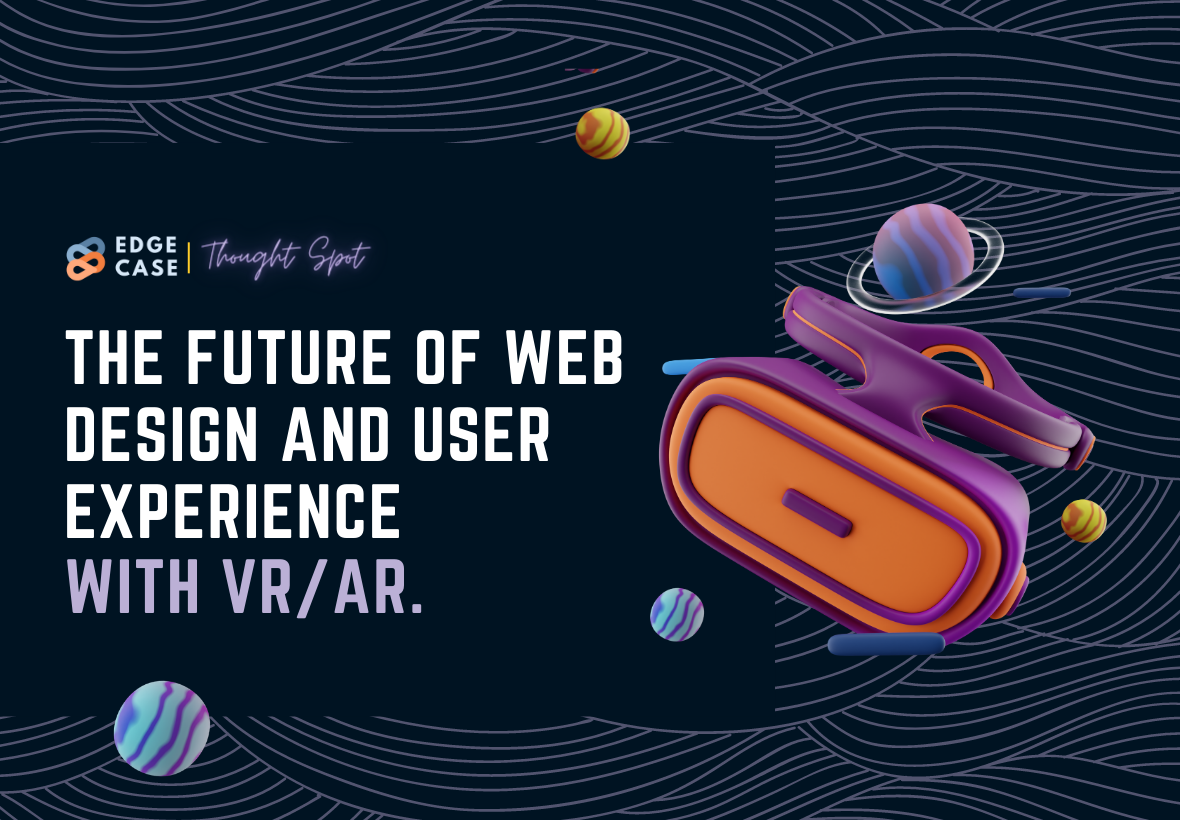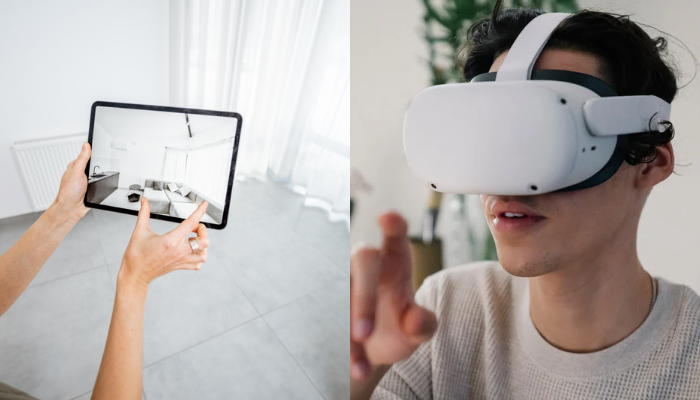
The Future of Web Design and User Experience with VR/AR.
The future of web design and user experience is constantly evolving, and new technologies are emerging that are changing the way we interact with websites. One of the most exciting new developments in this field is the use of virtual reality (VR) and augmented reality (AR) in web development.
WHAT ARE AUGMENTED & VIRTUAL REALITY?
Virtual reality is a computer-generated simulation of a three-dimensional environment that can be explored and interacted with using a VR headset. This technology allows users to immerse themselves in a digital world and interact with it in a way that feels more natural and realistic than traditional 2D interfaces. Augmented reality, on the other hand, overlays digital information on the user’s view of the real world. This can include text, images, or even 3D models, and it allows users to interact with digital content in a way that is more integrated with their real-world surroundings.

Both VR and AR have the potential to revolutionize web design and user experience. For example, imagine being able to explore a virtual showroom of a car dealership and interact with the cars in a more realistic way. Or being able to see how a piece of furniture would look in your living room before making a purchase. Or in the field of education, imagine being able to explore a virtual laboratory, or taking a virtual tour of a historical site.
AR/VR IN E-COMMERCE & EDUCATION
One of the most promising areas for VR and AR in web development is e-commerce. Online shopping can be a frustrating experience because it’s hard to get a sense of the size, scale, and quality of a product from a 2D image. With VR and AR, online shoppers can get a much more realistic sense of a product before they buy it. This can lead to higher customer satisfaction and fewer returns.
Another area where VR and AR can be beneficial is in the field of education. With VR and AR, students can explore and interact with virtual environments and simulations in a more engaging and interactive way. This can enhance the learning experience and make it more interesting and effective.

AR/VR IN TOURISM AND ENTERTAINMENT
The use of virtual reality (VR) and augmented reality (AR) technology is revolutionizing the tourism and entertainment industry. VR allows tourists to explore and experience destinations before even arriving there, providing an immersive and interactive experience. AR technology overlays digital information on the user’s view of the real world, allowing for more engaging and interactive experiences.
In tourism, VR can be used to create virtual tours of destinations, allowing potential tourists to explore a location before even planning a trip. VR can also be used to create virtual experiences such as a virtual hike through a national park or a virtual hot air balloon ride over a city. AR can be used to enhance the tourism experience by providing information about historical sites and landmarks in real time.
In the entertainment industry, VR technology is used to create immersive and interactive gaming experiences, while AR is used to enhance live events and performances. From virtual theme parks and roller coasters to virtual reality escape rooms, the use of VR technology is providing a new level of entertainment that was once only possible in the imagination. On the other hand, AR technology is being used to enhance the live events experience by providing interactive and engaging experiences.

However, it’s important to note that VR and AR technology is still in its early stages, and there are still challenges to overcome. For example, the cost of VR and AR hardware is still relatively high, and not everyone has access to it. Additionally, the technology is not yet advanced enough to provide the same level of immersion as a real-world experience.
In conclusion, the use of virtual reality and augmented reality in web development has the potential to revolutionize the way we interact with websites, and how we shop, learn, and explore. As technology continues to improve, we can expect to see more and more web developers incorporating VR and AR into their designs. But it’s important to keep in mind that VR and AR technology is still relatively new and has yet to be fully developed, so it will take time to see its full potential.
If you’re ready to take the next step and implement VR/AR on your website, don’t hesitate to contact us for expert assistance.
